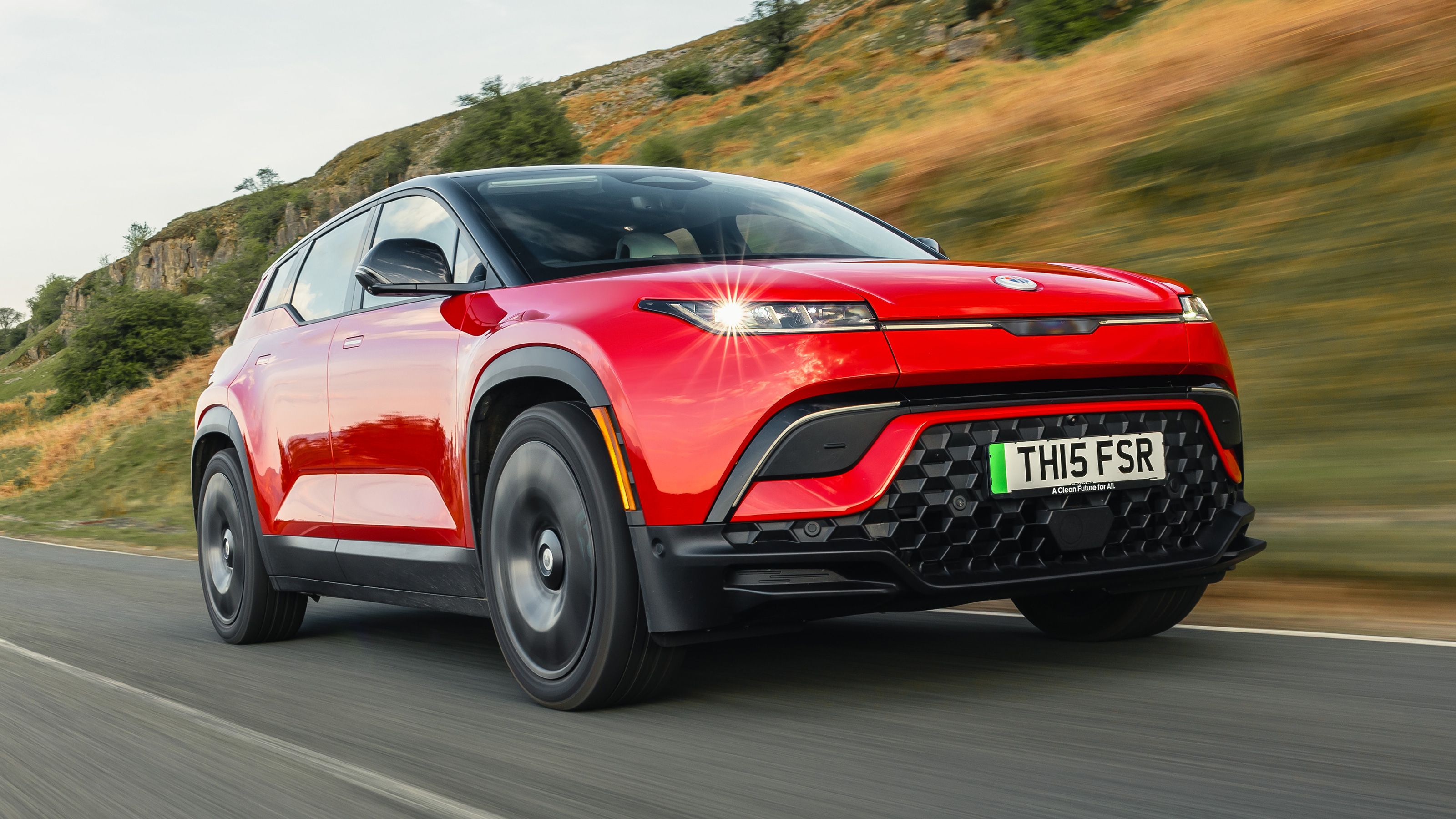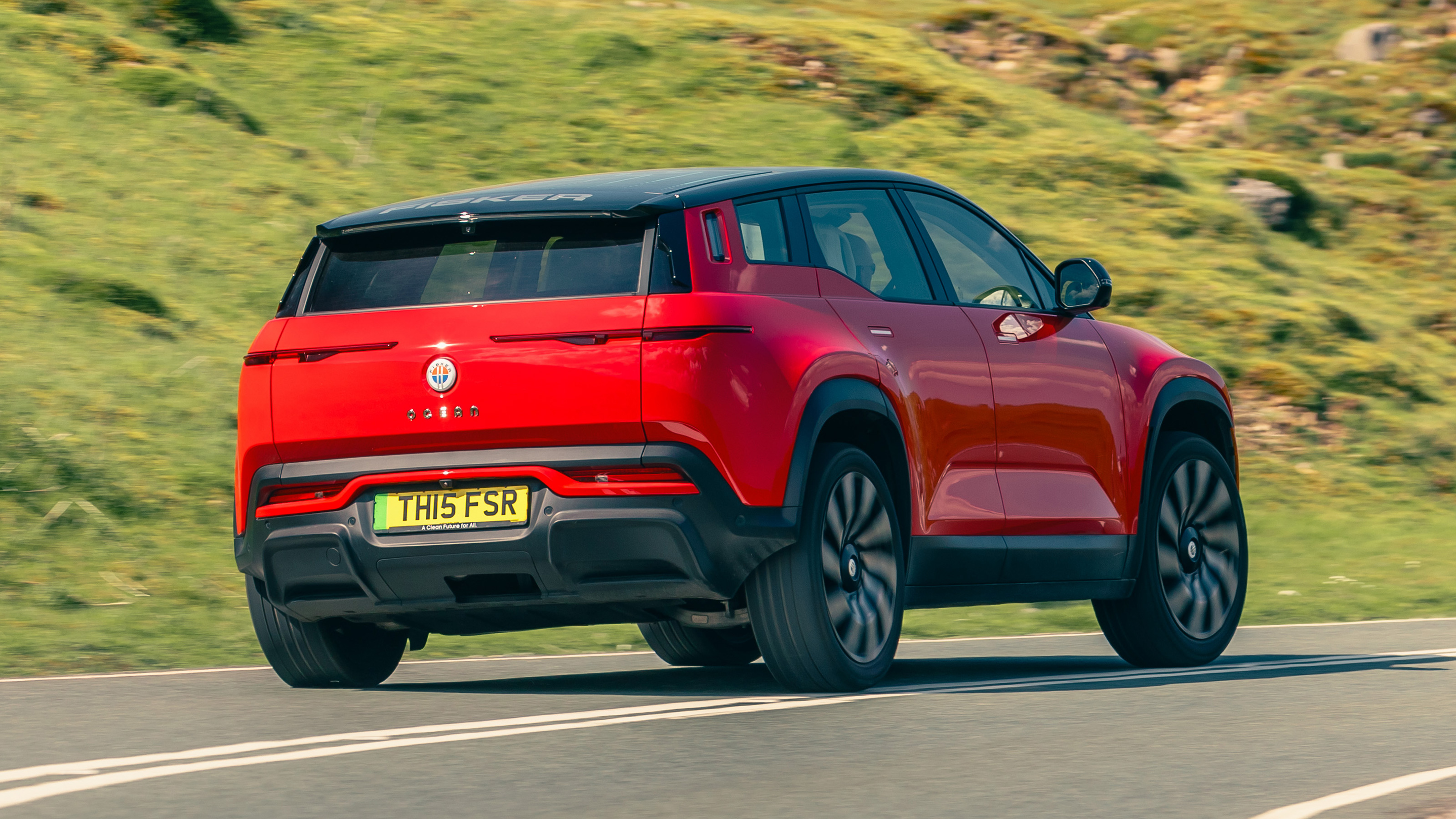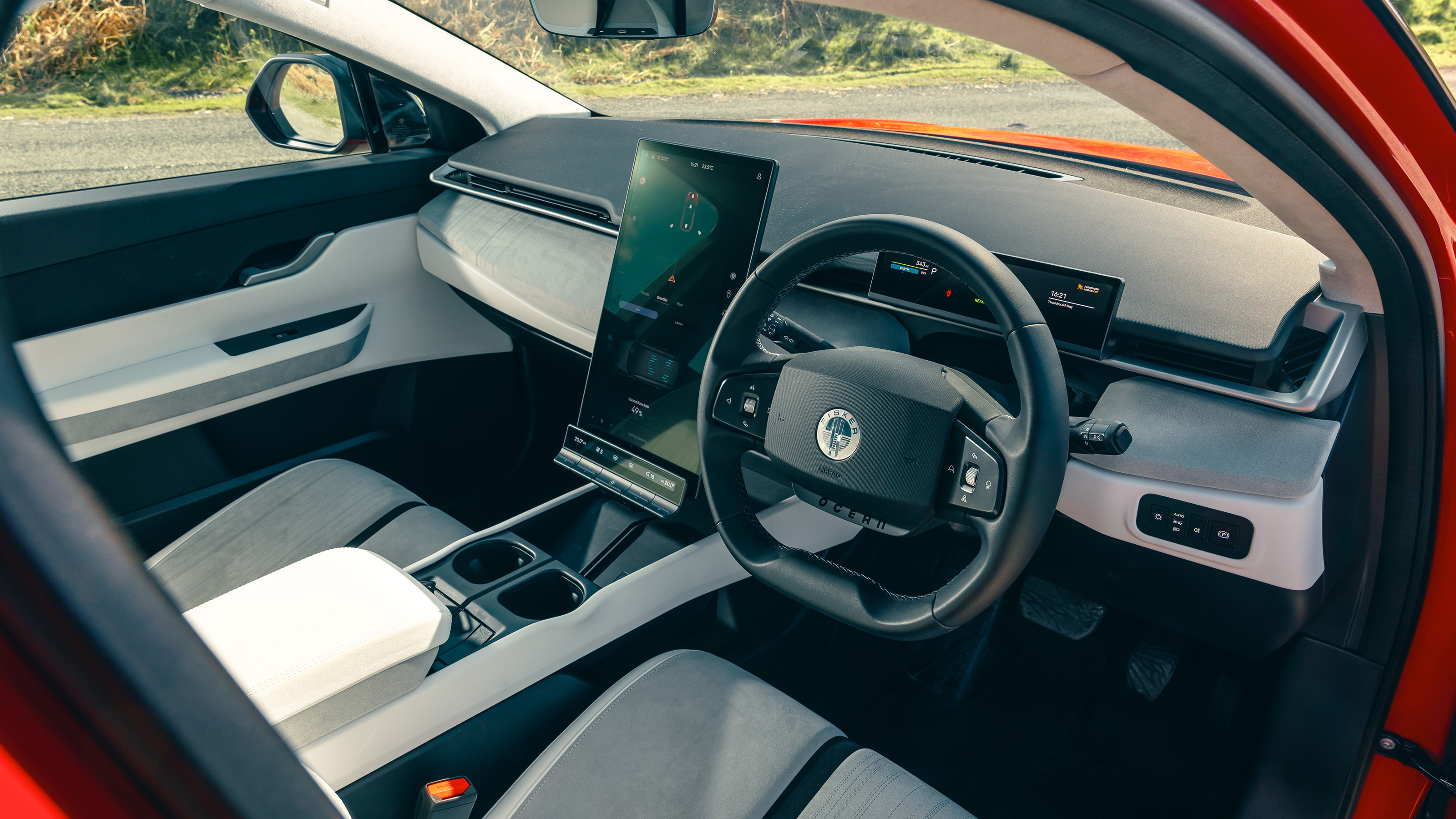
Fisker Ocean review
Driving
What is it like to drive?
You’re not going to like it initially. You get in, sit in these lovely seats, then put your hands out and grab this huge, thick steering wheel. You can barely get your hands round it. The leather has been stretched so tight it feels like plastic. It’s a poor first handshake in a car that otherwise does a reasonable amount to impress.
It’s easy to find a good driving position, and the Ocean doesn’t feel that big to drive despite being 4.8 metres long and just 10mm under two metres wide. It helps that the steering is fast and responsive and there’s plenty of power, but more than that the Ocean doesn’t suffer from too much body heave. It controls itself pretty well.
Bet there’s not much steering feel, though?
There’s none. But there never is, is there? As we said in the Overview, the fun in this car comes from its upbeat ambience rather than its backroad ability. It’ll do speed alright, it does composure better than we expected, but communication not so much. The best we can say is that it follows your inputs pretty faithfully.
And of course it’s deeply fast…
The entry-level Sport isn’t. That’s a 231bhp single motor on the front axle for 0-60mph in 7.0 seconds. Should you want it, you can get that experience from the Ultra and Extreme versions by keeping to Earth mode, which also allows you to get more in touch with torque steer.
Fun and Hyper modes (selected on the steering wheel) bring in both motors for 564bhp and 0-60mph in a claimed 3.7s. We timed it at 4.1s without the cheating one foot rollout so beloved of US firms. Fastest times are achieved by selecting Boost mode in the centre screen (limited to 500 actions for some unknown reason), but it only cut a couple of tenths from the time.
Either way it’s properly swift, with surging performance that belies its weight. Not much is going to keep up.
This must be the fastest EV available at this money?
The MG4 XPower would probably give it a run for its money. Where it is absolutely in a class of its own at this money is battery capacity. Nothing else remotely comes close to the Ocean’s 113kWh (106kWh useable) pack. The trouble is it’s not that efficient. Even on a steady motorway cruise on a spring day it was only averaging 2.35 mi/kWh, meaning a more likely real world range of 280-300 miles. But when you fill it up, the range always resets to 440 miles; it doesn’t learn your driving patterns in other words. One for another software update, we presume.
It charges quickly though (10-80 per cent in 35mins, 180kW max) and the Extreme’s SolarSky roof panel does have modest real world benefits: we added 10 miles over the course of a week.
How are the brakes?
We already mentioned that the regen is occasionally inconsistent: lift off and you can detect the motors grabbing and letting go a little, so slowing isn’t peerlessly smooth. The more regen you go for, the more noticeable it is. The wheel brakes are fine as long as you aren’t planning any track attacks. Our first braking stop was where it ought to be (60-0mph in 33.7 metres), but by the fourth that had gone out to 39 metres and the pedal was mush. Don’t worry too much, it’s what we find in pretty much every mainstream EV, although the brake pedal’s long travel isn’t good for confidence.
How is it around town?
The main thing to watch for is the thick A-pillars, which can easily conceal cars. Oh and that weird black box at the base of the pillar is the driver attention camera. Go ahead and disable that in the menus. The rear windows are small, so visibility beyond them is awkward. Fisker fits a switchable rearview camera/mirror and for once we found ourselves using the screen rather than the reflection.
The throttle is easy to modulate, so (provided you avoid Hyper mode) you don’t find yourself leaping away from the lights. But it is a big car, made to look smaller by its big wheels and clever proportions. Same as the Hyundai Ioniq 5.
Can you tow with it?
You can. And there’s not that many EVs that can match its 1,820kg capacity. Towing locks it into Fun mode, which means 4WD, but without the, er, hyperactivity of Hyper mode. To be honest it was the mode we found ourselves driving in most often.
Featured

Trending this week
- Car Review
Renault Clio
- Car Review
Hyundai Kona






